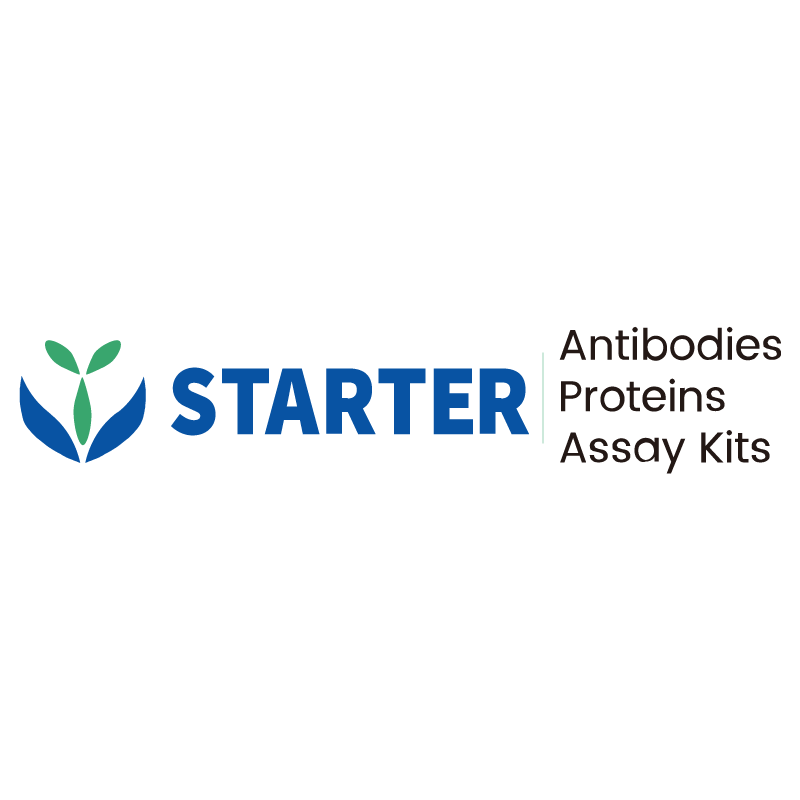WB result of VGlut1 Recombinant Rabbit mAb
Primary antibody: VGlut1 Recombinant Rabbit mAb at 1/1000 dilution
Lane 1: unboiled mouse liver lysate 20 µg
Lane 2: unboiled mouse brain lysate 20 µg
Negative control: unboiled mouse liver lysate
Secondary antibody: Goat Anti-rabbit IgG, (H+L), HRP conjugated at 1/10000 dilution
Predicted MW: 62 kDa
Observed MW: 56 kDa
Product Details
Product Details
Product Specification
| Host | Rabbit |
| Antigen | VGlut1 |
| Synonyms | Vesicular glutamate transporter 1; VGluT1; Brain-specific Na(+)-dependent inorganic phosphate cotransporter; Solute carrier family 17 member 7; Bnpi; Slc17a7 |
| Immunogen | Synthetic Peptide |
| Location | Cell membrane, Synapse |
| Accession | Q3TXX4 |
| Clone Number | S-1587-19 |
| Antibody Type | Recombinant mAb |
| Isotype | IgG |
| Application | WB, IHC-P, IF |
| Reactivity | Hu, Ms, Rt |
| Positive Sample | human brain, mouse brain, rat brain |
| Purification | Protein A |
| Concentration | 0.5 mg/ml |
| Conjugation | Unconjugated |
| Physical Appearance | Liquid |
| Storage Buffer | PBS, 40% Glycerol, 0.05% BSA, 0.03% Proclin 300 |
| Stability & Storage | 12 months from date of receipt / reconstitution, -20 °C as supplied |
Dilution
| application | dilution | species |
| WB | 1:1000 | Hu, Ms, Rt |
| IHC-P | 1:2000 | Hu, Ms, Rt |
| IF | 1:500 | Hu, Ms, Rt |
Background
Vesicular glutamate transporter 1 (VGLUT1) is a crucial protein encoded by the SLC17A7 gene, predominantly found in neuron-rich regions of the brain. It is a vesicle-bound, sodium-dependent phosphate transporter that plays a vital role in packaging glutamate into synaptic vesicles, which is essential for excitatory neurotransmission. VGLUT1 is primarily expressed in the neocortex, cerebellum, and hippocampus, and is involved in intercortical and corticothalamic projections. Its function relies on a proton gradient across the vesicular membrane, established by a V-type ATPase, allowing it to couple proton movement out of the vesicle with glutamate transport into it. This protein is also implicated in various neurological disorders, including learning and memory disorders, Alzheimer's disease, and pain pathology.
Picture
Picture
Western Blot
WB result of VGlut1 Recombinant Rabbit mAb
Primary antibody: VGlut1 Recombinant Rabbit mAb at 1/1000 dilution
Lane 1: unboiled rat liver lysate 20 µg
Lane 2: unboiled rat brain lysate 20 µg
Negative control: unboiled rat liver lysate
Secondary antibody: Goat Anti-rabbit IgG, (H+L), HRP conjugated at 1/10000 dilution
Predicted MW: 62 kDa
Observed MW: 56 kDa
Immunohistochemistry
IHC shows positive staining in paraffin-embedded human cerebral cortex. Anti-VGlut1 antibody was used at 1/2000 dilution, followed by a HRP Polymer for Mouse & Rabbit IgG (ready to use). Counterstained with hematoxylin. Heat mediated antigen retrieval with Tris/EDTA buffer pH9.0 was performed before commencing with IHC staining protocol.
IHC shows positive staining in paraffin-embedded human cerebellum. Anti-VGlut1 antibody was used at 1/2000 dilution, followed by a HRP Polymer for Mouse & Rabbit IgG (ready to use). Counterstained with hematoxylin. Heat mediated antigen retrieval with Tris/EDTA buffer pH9.0 was performed before commencing with IHC staining protocol.
Negative control: IHC shows negative staining in paraffin-embedded human liver. Anti-VGlut1 antibody was used at 1/2000 dilution, followed by a HRP Polymer for Mouse & Rabbit IgG (ready to use). Counterstained with hematoxylin. Heat mediated antigen retrieval with Tris/EDTA buffer pH9.0 was performed before commencing with IHC staining protocol.
IHC shows positive staining in paraffin-embedded mouse cerebellum. Anti-VGlut1 antibody was used at 1/2000 dilution, followed by a HRP Polymer for Mouse & Rabbit IgG (ready to use). Counterstained with hematoxylin. Heat mediated antigen retrieval with Tris/EDTA buffer pH9.0 was performed before commencing with IHC staining protocol.
Negative control: IHC shows negative staining in paraffin-embedded mouse liver. Anti-VGlut1 antibody was used at 1/2000 dilution, followed by a HRP Polymer for Mouse & Rabbit IgG (ready to use). Counterstained with hematoxylin. Heat mediated antigen retrieval with Tris/EDTA buffer pH9.0 was performed before commencing with IHC staining protocol.
IHC shows positive staining in paraffin-embedded rat cerebellum. Anti-VGlut1 antibody was used at 1/2000 dilution, followed by a HRP Polymer for Mouse & Rabbit IgG (ready to use). Counterstained with hematoxylin. Heat mediated antigen retrieval with Tris/EDTA buffer pH9.0 was performed before commencing with IHC staining protocol.
Negative control: IHC shows negative staining in paraffin-embedded rat liver. Anti-VGlut1 antibody was used at 1/2000 dilution, followed by a HRP Polymer for Mouse & Rabbit IgG (ready to use). Counterstained with hematoxylin. Heat mediated antigen retrieval with Tris/EDTA buffer pH9.0 was performed before commencing with IHC staining protocol.
Immunofluorescence
IF shows positive staining in paraffin-embedded mouse cerebellum. Anti-VGlut1 antibody was used at 1/500 dilution (Green) and incubated overnight at 4°C. Goat polyclonal Antibody to Rabbit IgG - H&L (Alexa Fluor® 488) was used as secondary antibody at 1/1000 dilution. Counterstained with DAPI (Blue). Heat mediated antigen retrieval with EDTA buffer pH9.0 was performed before commencing with IF staining protocol.


